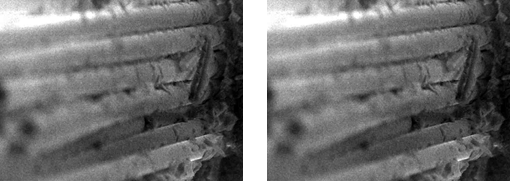WRITING GUIDELINE OF MAJALAH KEDOKTERAN GIGI INDONESIA
I. GENERAL
- The manuscript should be written in Indonesian and have never been published in any magazine having ISSN or ISBN.
- The manuscript may take the form of research, case studies, or literary studies.
- All received cases should have a concern on difficult, unique, and rare cases with uncommon problem solving bearing essential importance to publish.
- The manuscript should be written in the form of article instead of a report. It shall be narrated into a good Indonesian complying with the principles of Indonesian grammar, instead of points.
- The author should register as an author in this link; http://jurnal.ugm.ac.id/mkgi before they can log in to the journal of Dentistry Magazine Indonesia, to submit and upload the manuscript.
- The manuscript will be published in Majalah Kedokteran Gigi Indonesia after being reviewed by peer reviewers.
- The editorial staffs have the right to edit the manuscript without making any changing to its content.
- The author of the manuscript is liable for the content of the published manuscript.
- Majalah Kedokteran Indonesia will inform the author in case of an unpublished manuscript.
- Submitted manuscript and illustration legally belong to the publisher and should not be published in other media without official permission of the publisher.
- Support the authors of the magazine is expected by using the reference of the journal Dentistry magazine that has been published.
- All forms of communication should be electronically based.
- The writing template can be downloaded on the website of Majalah Kedokteran Gigi Indonesia: http://jurnal.ugm.ac.id/mkgi
- For further information please contact: Publications Unit, Faculty of Dentistry, University of Gadjah Mada, Jl Denta No 1, Sekip Utara, Yogyakarta, 55281, Phone: 085643727254, e-mail: mkgi@ugm.ac.id
II. Writing Systematic
- The Results:
- Titles are equipped with the author's name, author’s institution, address and corresponding e-mail (write a formal email address example: not unyu@gmail.com).
- Abstract is written in Indonesian and English (with the title). Abstract of the research is made in one paragraph without subtitles which consists of the background, objective, research methods, results, conclusions and keywords (3-5 phrases).
- Sub title is composed of: Introduction (consisting of background, problem formulation, literature review and objectives written in one chapter without subtitles), Research Methods, Results, Discussion, Conclusion (consisting of conclusions and suggestions, in one paragraph or more, not in the form of points) References.
- The research should be narrated in text instead of in points. Figures should be mentioned in the related text rather than as an attachment.
- Authors must include an electronic copy of written and signed consent to publish information from the patient or the housing ethic institution before submission. Submitted manuscripts must include this statement in the script.
2. Case Report:
- Title, Author’s name, institution, address and corresponding e-mail.
- Abstract should be written in Indonesian and English. Abstract of case report contains case made in one paragraph without the subtitle consistsing of the background, objectives, methods and treatment results, conclusions and keywords (3-5 phrases).
- Sub title is composed of: Introduction (consisting of background, literary review, problem formulation and objectives written in one chapter without subtitles), Methods, Discussion, Conclusion, References.
- Report should be narrated in the text instead of in points; figures should be mentioned in the related text rather than as an attachment.
- Authors must include an electronic copy of written and signed consent to publish information from the patient or the housing ethic institution before submission. Submitted manuscripts must include this statement in the script.
III. Writing Technique
- The title should be no more than 12 words, describing the entire contents of the writings, letters typed in Arial type font 14 bold capital (the title of the English abstract should also be no more than 12 words).
- Abstract is written in Indonesian and English (italics) in a maximum of 250 words accompanied by 3-5 keywords, typed in Arial 10 font.
- The manuscript is typed in Arial font 10 of double space A4 paper size (210 x 297 mm)
- The script should include a reference up to 10-15 pages.
- The images should be in JPEG format and have an minimum resolution of 300 dpi (dots per inch), the tables should be included in the body of the text rather than as an attachment
- Figures and tables should be numbered with Arabic numerals, and table titles and briefed information of the table written in Arial of 9 font with single space.
Figure Sample:

(A) (B)
Figure 1. A Fiber by the application of silane (A) has a stronger bond with the matrix compared to fiber without the application of silane (B)
Table Sample:
(open table (comprised horizontal lines, without vertical lines)
Table 1. Average, standard deviation (SD), median, interquartile range (IQR) caries experience of children aged 12 years in rural and urban areas

IV. References
The composition of the references used should consist of 80% of primary references (journals, proceedings) and a maximum of 20% of secondary references (text book) published in the last 10 years. Reference is written by Vancouver format system. Each reference cited is written using the number placed at the end of a sentence. Consistent use of Vancouver system (https://csl.mendeley.com/styles/405655971/vancouver-MajKedGiInd) is required in the writing of reference. References are arranged in order of appearance in the text. It is advisable to use software application to manage references and bibliography, both free applications (eg: Mendeley, Zotero, Refworks) or paid applications (misalnya: Endnote, Reference Manager).
- Powers J M, Sakaguchi RL. Craig’s restorative dental materials 12th ed. Missouri: Mosby An Imprint of Elsevier; 2006. H. 58-9.
- Irfan A. Protocols for predictable aesthetic dental restorations [Internet]. Oxford: Blackwell Munksgaard; 2006 [cited 2009 May 21]. Available from Netlibrary: http://cclsw2.vcc.ca:2048/login?url=http://www.netLibrary.com/urlapi.asp?action=summary& v=1&bookid=181691.
- Tacken MPE, Cosyn J, De Wilde W, Aerts J, Govaerts E, Vannet BV. Glass fibre reinforced versus multistranded bonded orthodontic retainers: a 2 year prospective multi-centre study. Eur J Orthod. 2010; 32: 117–123








